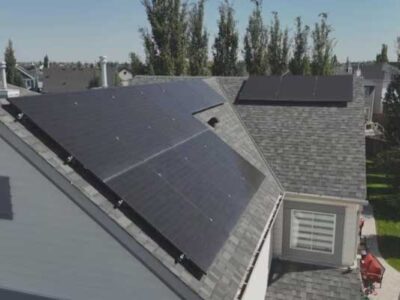- Nova Scotia experienced over 4,700 power outages in 2023, impacting residents, farmers, and businesses.
- Nova Scotia Power has been fined multiple times since 2019 for failing to meet service reliability standards.
- The utility is investing $1.3 billion in grid upgrades to address aging infrastructure and climate-related disruptions.
Nova Scotia’s power grid is facing mounting scrutiny as frequent unplanned outages disrupt daily life for residents and businesses across the province.
A CBC News analysis found that in 2023 alone, there were more than 4,700 power outages, with temporary blackouts reported almost daily. The median number of affected customers per outage was 65, highlighting the widespread impact on communities.
The province’s sole electricity provider, Nova Scotia Power, attributes these disruptions to adverse weather conditions, tree interference, and infrastructure vulnerabilities. In response, the company has committed to a $1.3 billion investment in reliability upgrades over the next five years.
However, some residents remain skeptical about whether these efforts will bring meaningful improvements.
Farmers Bear the Brunt

Nova Scotia is one of eastern Canada’s Maritime provinces on the Atlantic.
For farmers like David Meister, who runs a cattle ranch in New Ross, Nova Scotia, power outages are more than just an inconvenience—they threaten his ability to care for his livestock. Without electricity, he loses access to essential systems such as electric fences, water pumps, and barn cleaning equipment, forcing him to adopt costly and time-consuming workarounds.
“You don’t know when it’s going to go out or for how long,” Meister said, echoing frustrations shared by many rural residents.
Agricultural businesses are particularly vulnerable to power disruptions, which can impact food production, storage, and processing. The Nova Scotia Federation of Agriculture has previously called for infrastructure improvements, citing the need for more resilient energy solutions to support the province’s farming sector.
Accountability
Since 2019, Nova Scotia Power has been fined four times by the provincial regulator for failing to meet performance standards. These penalties stem from the company’s inability to maintain reliable service in certain areas, raising concerns about oversight and enforcement.
Despite these setbacks, Nova Scotia Power’s Senior Director of Energy Delivery, Matt Drover, insists that efforts to enhance reliability are well underway. “We’re cutting trees every single day, replacing power poles,” Drover stated, emphasizing the utility’s focus on preventive maintenance and infrastructure improvements.
Aging Infrastructure

Nova Scotia Power generates more than 2,400 megawatts of electricity that is delivered across 32,000 km of transmission and distribution lines. (Andrew Vaughan/Canadian Press)
Nova Scotia’s power grid, like many across North America, is grappling with the dual challenges of aging infrastructure and increasing climate-related disruptions. The province is particularly vulnerable to extreme weather events, including hurricanes, heavy snowfall, and high winds—all of which contribute to outages.
In 2022, post-tropical storm Fiona caused severe damage across Atlantic Canada, leaving hundreds of thousands without power for days. Such events underscore the urgent need for grid modernization and greater investment in renewable energy sources, microgrids, and battery storage systems to enhance resilience.
Will it Pay Off?
While Nova Scotia Power’s planned $1.3 billion investment is a significant step, experts caution that long-term grid stability requires more than just maintenance—it demands a comprehensive strategy that includes upgrading transmission lines, expanding decentralized energy solutions, and improving response times during emergencies.
For now, residents like Meister continue to navigate unpredictable outages, hoping that promised improvements will translate into tangible results. As Nova Scotia transitions toward cleaner and more resilient energy systems, the challenge remains: will these investments be enough to keep the lights on?












Comments